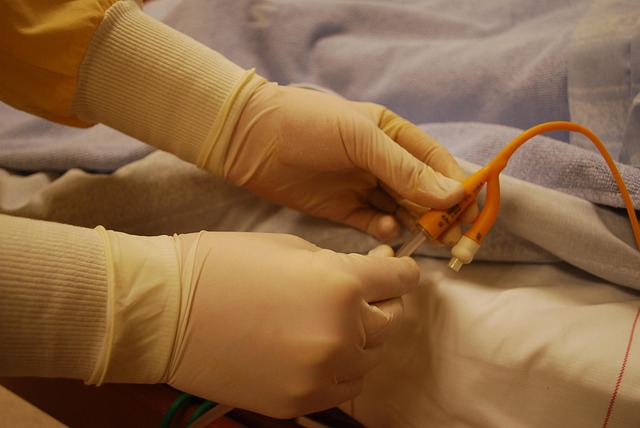
The Digital Health Revolution: How Technology is Redefining Patient Care
The healthcare landscape is undergoing a seismic shift, driven by rapid advancements in wearable technology, telemedicine, and artificial intelligence (AI). In 2025, these innovations are no longer futuristic concepts—they are essential tools transforming how we monitor, diagnose, and treat medical conditions. The global digital health market is projected to surpass $1.5 trillion by 2030, with AI-powered wearables and telehealth platforms leading the charge 1012. From real-time health tracking to AI-assisted diagnostics, the integration of these technologies is making healthcare more personalized, proactive, and accessible than ever before.
Wearables 2.0: Beyond Fitness Tracking to Clinical-Grade Monitoring
The era of basic step-counting smartwatches is over. Today’s wearables are FDA-approved medical devices capable of detecting life-threatening conditions like atrial fibrillation, sleep apnea, and diabetic ketoacidosis 710.
Key Innovations in Wearable Health Tech:
- Smart Contact Lenses & Patches: Non-invasive glucose monitoring for diabetics, replacing painful finger-prick tests 7.
- Neurological Wearables: Devices like Embrace2 detect epileptic seizures before they occur, sending alerts to caregivers 10.
- Mental Health Sensors: AI analyzes heart rate variability (HRV), skin conductance, and voice patterns to detect stress, anxiety, and depression in real-time 11.
- Elderly Care Solutions: Fall-detection wearables (e.g., Apple Watch Ultra) automatically contact emergency services if a user is immobile for over a minute 7.
The Impact: Wearables reduce hospital readmissions by 30% and cut healthcare costs by enabling early intervention 10.
Telemedicine in 2025: From Convenience to Standard Care
Telehealth has evolved from a pandemic stopgap into a core component of healthcare delivery. Over 50% of U.S. patients now prefer virtual visits for routine care, with AI-powered platforms enhancing diagnostic accuracy and accessibility 612.
Breakthroughs in Telemedicine:
- AI Triage Systems: Chatbots like Hippocratic AI analyze symptoms via voice or text, directing patients to the right care level (e.g., urgent care vs. home treatment) 9.
- Hospital-at-Home Programs: RPM (Remote Patient Monitoring) devices allow heart failure, COPD, and post-surgical patients to recover at home while doctors track vitals remotely 611.
- Mental Health Teletherapy: Platforms like Woebot use cognitive behavioral therapy (CBT) bots to provide 24/7 mental health support 11.
- 5G-Enabled Remote Surgery: Surgeons perform operations from miles away using haptic feedback gloves and AR overlays 10.
The Data: Telemedicine reduces no-show rates by 40% and saves patients an average of 100 minutes per visit 12.
AI in Healthcare: From Diagnostics to Drug Discovery
Artificial intelligence is no longer just an assistant—it’s a co-pilot for clinicians. By 2025, 66% of physicians use AI daily, from automating notes to predicting patient deterioration 910.
AI’s Most Disruptive Applications:
- Early Disease Detection: Algorithms analyze retinal scans, CTs, and genomic data to spot cancer, Alzheimer’s, and diabetes years before symptoms appear 10.
- Generative AI for Clinicians: Tools like Abridge cut documentation time by 74% using ambient voice-to-EHR transcription 11.
- Drug Development: AI models like AlphaFold 3 predict protein structures, slashing drug discovery timelines from 5 years to 6 months 10.
- Digital Twins: Virtual replicas of patients simulate how treatments (e.g., chemo, surgeries) will affect their bodies before real-world trials 6.
The Challenge: AI bias remains a concern, with 40% of doctors skeptical about algorithmic accuracy 9.

The Road Ahead: Challenges & Opportunities
While digital health promises a brighter future, key hurdles remain:
- Data Privacy: With 133 million health records breached in 2023, blockchain and HIPAA-compliant AI are critical for securing patient data 12.
- Health Equity: Rural and low-income populations still lack access to 5G, wearables, and telehealth—a gap startups like Zipline (drone-delivered meds) aim to bridge 10.
- Regulatory Hurdles: The FDA struggles to keep pace with AI algorithm updates, leading to approval delays 9.
The Bottom Line: The fusion of wearables, telemedicine, and AI is creating a healthcare system that’s preventive, personalized, and patient-centric. As these technologies mature, they’ll save lives, reduce costs, and empower individuals to take control of their health like never before.
